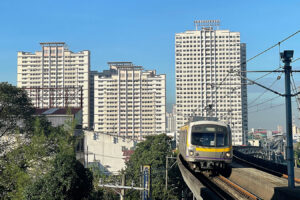




Philippines Trade Update: Trade trajectories trend along
 DOWNLOAD
DOWNLOAD

Policy Rate Updates: Double cut finale
 DOWNLOAD
DOWNLOAD

Monthly Economic Update: One for the road
 DOWNLOAD
DOWNLOAD


Philippine growth seen running ‘below potential’

The Philippines is expected to be the second-fastest growing economy in the Asia-Pacific (APAC) region this year, although expansion is “below potential,” Moody’s Analytics said.
In a report, Moody’s Analytics said the Philippines’ gross domestic product (GDP) growth is expected to average 5.9% this year, just behind India (6.8%) but ahead of Vietnam (5.8%), Indonesia (5.2%), and China (4.9%).
“Rising exports and stronger domestic demand have driven better-than-expected growth across most of the region in the first quarter,” Moody’s Analytics said. “Stronger household consumption also contributed to output gains.”
The forecast is slightly below the government’s 6-7% growth target, but faster than the Philippine GDP growth of 5.5% in 2023.
The economy expanded by 5.7% in the first quarter.
National Economic and Development Authority Secretary Arsenio M. Balisacan earlier said that GDP growth must average 6.1% in the succeeding three quarters to meet the government’s target.
Moody’s noted that the Philippines’ economic growth is still below pre-pandemic levels.
“Output in the ASEAN (Association of Southeast Asian Nations) group of economies is more than 6% behind the pre-pandemic trend, with the Philippines and Thailand faring the worst (GDP in both countries is more than 10% below pre-pandemic levels),” it said.
Moody’s Analytics said that the APAC economy is “outperforming but underachieving.”
“Economies in the region are doing better than most economies worldwide. But with growth in many countries running below potential, it would be premature to say that the region is out of the woods,” it said.
It forecasts the APAC region to grow by 3.9% in both 2024 and 2025.
“Key challenges in the months ahead are unsteady foreign demand, lingering inflation, and a delayed easing of monetary settings,” it said.
“A fresh uptick in commodity prices would stoke inflation and prompt monetary policy tightening that would weigh heavily on the region’s economy,” it added.
For 2025, Moody’s Analytics sees the Philippines expanding by 6%. This would make it the third-fastest growing country in the region, after India and Vietnam (both at 6.5%).
The latest forecast for the Philippines also falls below the government’s 6.5-7.5% target band for next year.
INFLATION
Meanwhile, Moody’s said it expects inflation to average 3.6% this year. This is a tad higher than the Bangko Sentral ng Pilipinas’ (BSP) 3.5% projection for 2024.
It sees inflation easing to 3.3% next year, matching the BSP’s baseline forecast.
“Inflation is a key factor underpinning our forecast over the next 12 months. Consumer price inflation in the region is slowing, but progress has been uneven. Price pressures have eased in developed and developing Asia-Pacific economies,” Moody’s said.
“But while inflation in developing economies is broadly in line with central bank targets or pre-pandemic averages, it is a bit higher than central banks in developed economies would like it to be.”
Headline inflation picked up for a fourth straight month to 3.9% in May. However, this was the sixth straight month that inflation settled within the BSP’s 2-4% target band.
“For the region’s central banks, exchange rates are a primary concern. Given expected rate cuts by the US Federal Reserve Bank (we look for a cut to the federal funds rate in September), attention this year has focused on when central banks in this region will ease monetary settings,” it added.
The BSP has kept its benchmark rate steady at 17-year high 6.5%. From May 2022 to October 2023, it raised rates by a total of 450 basis points to tame inflation.
The Monetary Board is set to meet on Thursday for its next policy review. A BusinessWorld poll of 15 analysts said they expect the central bank to stand pat at its meeting. — Luisa Maria Jacinta C. Jocson
This article originally appeared on bworldonline.com





 By BusinessWorld
By BusinessWorld